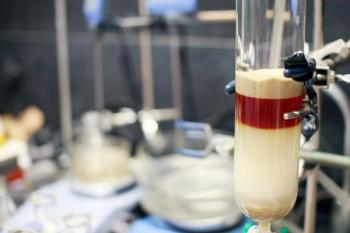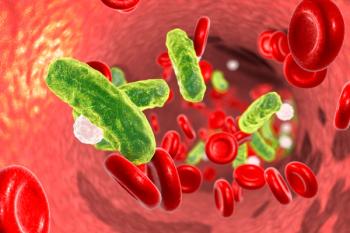
- August 2024
- Volume 20
- Issue 8
- Pages: 23–27
Streamlining PET Viscosity Measurement Using an Automated Differential Viscometer
The determination of dilute solution viscosity is crucial in the polyethylene terephthalate (PET) industry and, historically, this test has been performed using manual glass capillary viscometers. This article describes a new fully automated method for PET viscosity determination based on a two-capillary differential viscometer. The precision of this automated method is tested with virgin and recycled PET with different ranges of viscosity and crystallinity.
Polyethylene terephthalate (PET) is one of the most important synthetic polymers produced because it offers numerous advantages such as aesthetic appeal, barrier properties, durability, recyclability, and sustainability. These attributes render it the preferred material for an extensive array of applications spanning diverse market sectors, including packaging, textiles, and machinery manufacturing.
The synthesis of PET involves a polycondensation reaction between the monomers terephthalic acid and ethylene glycol. As the polymerization reaction proceeds, the viscosity of the material increases due to the growth in its chain length. The chain length or molecular weight determines the mechanical properties and the ability to produce PET in different forms for different applications.
Size-exclusion chromatography (SEC) is typically used for assessing the molecular weight of polymers, but for PET, viscosity analysis is preferred due to its simplicity, cost-effectiveness, practicality, and direct correlation with molecular weight. Solution viscosity is used to define the polymer grade because it determines its processability, end-use properties, and application target (textile grades 0.4–0.7 dL/g, bottle grades 0.7–0.85, engineering plastic applications 1.0–2.0 dL/g), but it can also be used for quality control during several stages of the production process. In recent years, this control has become even more relevant as an increasing amount of recycled materials are being incorporated.
To help R&D and quality control efforts, the PET industry has traditionally relied on suspended-level viscometers which have standardized methods (1,2). However, the use of this type of viscometers is labor-intensive and time-consuming.
A new automated method has been implemented for determining solution viscosity in PET, based on measuring differential pressure in a two-capillary differential viscometer (3) generated by a forced solvent flow.
In dilute solution viscosity, the fundamental measurement is the relative viscosity ƞr, which is calculated as the ratio of a polymer solution viscosity to the viscosity of the neat solvent:
The relative viscosity is a dimensionless quantity always higher than one. In a glass capillary viscometer, it is measured as the drop time of the polymer solution over the drop time of the pure solvent in the same conditions, and in a two-capillary differential viscometer it is measured as the ratio of pressure-drop of the polymer solution and the pure solvent as they pass through their respective capillaries.
The new automated viscometer is used in this work, in which continuous differential pressure signals are collected simultaneously from a measurement and a reference capillary, proportional to the viscosity of polymer solution and neat solvent. Continuous signals of relative viscosity and specific viscosity (relative minus one) are calculated. In contrast to other existing methods, in which a large volume of solution is required for reaching a stable measurement, here, a chromatographic-like peak is obtained after the injection of a small volume (0.2 mL of polymer solution, as depicted in Figure 1). This represents a significant reduction of polymer solution volume, savings in overall solvent consumption, and a decrease in analysis time. It also represents an advantage in the method’s robustness, given that lower amounts of viscous polymer solutions run through the system, which reduces the risks of obstructing the capillaries and other hardware components.
The area under the peak (A) is quantified and used to calculate the specific viscosity of the polymer solution:
Given that the specific viscosity of the polymer solution is proportional to the concentration, to isolate the viscosity effect, the reduced, inherent, and intrinsic viscosities are used:
Both inherent and reduced viscosity depend on the concentration at which they are measured, while the intrinsic viscosity does not, and can be directly correlated to the molecular weight of the polymer. (4) The calculation of intrinsic viscosity can be performed by measuring the viscosity at a single concentration level and using a model equation to estimate the value at zero concentration. Among various models and equations, the Solomon-Ciutà equation (5) is chosen because it does not require additional parameters and only needs the relative viscosity measurement:
Experimental
All experiments were performed in an automated viscometer model IVA Versa (Polymer Char). 1,2-ortho-dichlorobenzene (oDCB), tetrachloroethane (TCE) and phenol (Scharlab), were used to prepare solvent blends using a laboratory heating magnetic stirrer (Velp Scientifica) at 100 ºC for 150 min, and the mixed solvent was filtered through a membrane of porosity of 0.5 microns before use. The solvent was stabilized with 300 ppm of an antioxidant 2,6-bis (1,-dimethylethyl)-4-methylphenol (BHT). Industrial samples of PET from different sources, both virgin and recycled, were used in the different studies.
PET samples were dissolved in the instrument at 100 ºC or 135 ºC for 30 min and, depending on the material’s crystallinity, under a nitrogen atmosphere to prevent potential degradation. Concentrations of 2 to 5 mg/mL, either in bottles with 50 mL solvent or vials with 8 mL, were prepared according to sample homogeneity requirements. Aliquots of 0.2 mL of the solutions were injected into the viscometer at 25 ºC using a constant pump flow rate of 3.0 mL/min.
Results and Discussion
To prove the suitability of this new approach to determine PET solution viscosity, two commercial grades targeted at different applications (fiber and bottle) were chosen and analyzed multiple times. The results are reported in Table 1 as intrinsic viscosity values calculated after measuring the specific viscosity of solutions prepared at 5 mg/mL in a mixture of phenol/TCE 60:40, according to the practice described in ISO:1628-5.
The precision of this new automated method is evidenced, with RSD values better than 1% as reported in ISO 1628-5. Additionally, the average values obtained are very close to the reference viscosities determined by the traditional Ubbelohde glass capillary method, further validating the efficacy of this new automated procedure.
Due to increasing environmental concerns and legislative actions, the industry is incorporating more recycled polymers in the production of PET products. This growing demand is creating new challenges for controlling recycled PET (rPET) streams, as the quality of these can vary depending on the source, and lack of homogeneity and consistency over time.
To ensure the quality of the finished products and the safe operation of processing machinery, it is crucial to measure the viscosity of every batch of rPET before incorporating it into the industrial process. For example, Table 2 compares virgin PET with rPET from two different batches. The viscosity test allowed for the early identification that batch B had lower molecular weight and might not be suitable for production. Additionally, higher variability in viscosity among different replicates indicates a lack of homogeneity, which could lead to failures in the finished products.
According to the widely used industry standard for determining the solution viscosity of PET (ISO:1628-5), several solvents can be used. Although the observed viscosity varies with different solvents, the values are correlated. Two different rPET samples, in pellet and flake form, were analyzed in two of the most commonly used solvents, both mixtures of chlorinated solvents and phenol. The data summarized in Table 3 shows the expected trend of lower observed viscosity in the TCE mixture. The choice of solvent did not significantly impact the precision of the measurement.
Dissolving certain grades of PET can be challenging due to their high crystallinity, requiring temperatures above 100 ºC. However, extended exposure to such high temperatures can degrade the material through chain scission, resulting in lower observed viscosity and inaccurate test results. To investigate this, a study was conducted on three different grades of PET with varying levels of crystallinity (low, medium, high). The viscosity was monitored at regular intervals, from 30 min of dissolution up to over one hour.
When using a temperature of 135 ºC, a continuous decrease in viscosity was observed for PET grades with some crystallinity, while no degradation occurred in amorphous PET dissolved at 100ºC. The degradation was more pronounced in the sample with the highest crystallinity, which also had a higher viscosity. To ensure precise and accurate results, it is crucial to accurately control the dissolution time for each sample, especially when using a multiple-vial autosampler.
Conclusions
This study introduces a new, fully automated method for measuring the viscosity of polyethylene terephthalate (PET) using a two-capillary differential viscometer. This method marks a significant advancement over traditional manual glass capillary viscometers by offering improved precision, reduced analysis time, and enhanced operator safety. Key findings and advantages of this new method include:
Enhanced precision and accuracy: This is demonstrated by the low deviation achieved in the sextuplicate analysis of two commercial PET grades, and the close match between the measured intrinsic viscosities and the reference values. This precision is achieved through the automation of dissolution, injection, and analysis processes, minimizing human error.
Reduction in analysis time and sample volume: The automated viscometer allows for simultaneous measurement of solvent and polymer solution viscosities, significantly reducing the time required for analysis. Additionally, it requires a smaller volume of polymer solution (0.2 mL), resulting in lower solvent consumption and faster measurement cycles.
Increased laboratory safety: Automation reduces operator exposure to hazardous solvents. This is particularly important given the toxic nature of some solvents used in PET viscosity measurement.
Effectiveness with virgin and recycled PET: The method has been validated with both virgin and recycled PET samples, showing consistent results across different viscosity ranges and crystallinity levels. This is crucial for quality control in the PET industry, especially with the increasing use of recycled materials.
Identification of suitable batches: The automated method effectively identifies variations in viscosity among different PET batches, which is vital for ensuring the quality and performance of the final products.
Overall, the automated viscometer method represents a significant improvement in the efficiency and safety of PET viscosity measurement, making it a valuable tool for both research and industrial applications. It offers reliable and rapid analysis, essential for the increasing demands of PET quality control, especially with the growing incorporation of recycled materials.
References
(1) ISO 1628-5:1998; Plastics—Determination of the Viscosity of Polymers in Dilute Solution Using Capillary Viscometers Part 5: Thermoplastic Polyester (TP) Homopolymers and Copolymers.
(2) ASTM D 4603-94; Standard Test Method for Determining Inherent Viscosity of Poly(Ethylene Terephthalate) (PET); American Society for Testing and Materials: Philadelphia, 1994.
(3) Abbott, S. D.; Yau, W. W. U.S. Patent 4,578,990, 1986.
(4) Gupta, V. B.; Bashir, Z. PET Fibers, Films, and Bottles: Sections 5–7. In Handbook of Thermoplastic Polyesters; Wiley-VCH, Verlag GmbH & Co., KGaA: 2005; pp 362–388.
(5) Solomon, O. F.; Ciutà, I. Z. J. Appl. Polym. Sci. 1962, 6 (24).
About the Authors
Alberto Ortín received his M.Sc in analytical chemistry and a PhD in chemistry from the University of Valencia, Spain. He is currently a scientist at Polymer Char and his research interests include the implementation of new polyolefin characterization technologies and advanced detection methods. Correspondence to:
Pilar del Hierro has a degree in Chemistry from the University in Valencia, Spain. She holds a Master’s Degree in Polymer Science from the Science and Technology Institute for Polymers in Madrid, Spain, and PhD in Chemistry from the University of Valencia. In 2001 she joined Polymer Char where she has been working in the Analytical Department, being involved in the development of QC instrumentation.
Alba Cárdenas received a degree in Chemistry at the University of Valencia and then completed a master’s in polymeric and composite material technologies at the Polytechnic University of Valencia and the Plastics Technology Center, AIMPLAS in Valencia, Spain. She is currently an analyst in the Analytical Laboratory of Polymer Char, where her work focuses on the development of the Intrinsic Viscosity technique while also providing support on other analytical services.
Articles in this issue
over 1 year ago
Advancing Pharmaceutical Analysis with Ion Chromatographyover 1 year ago
Vol 20 No 8 The Column August 2024 Europe PDFNewsletter
Join the global community of analytical scientists who trust LCGC for insights on the latest techniques, trends, and expert solutions in chromatography.





